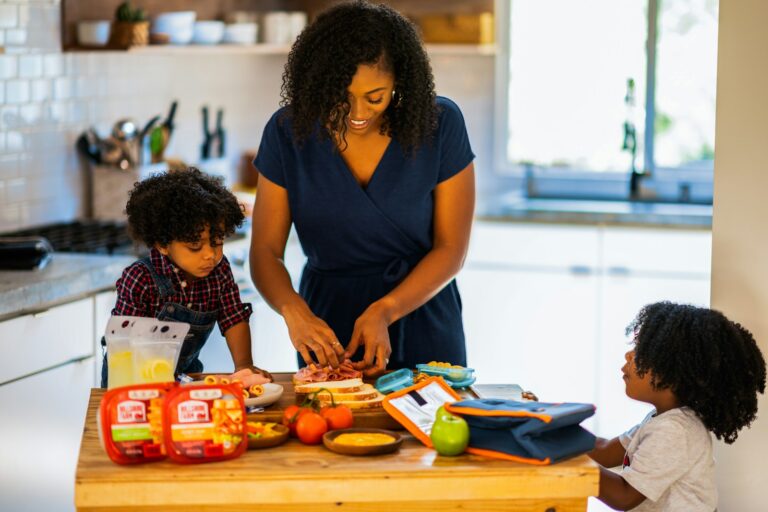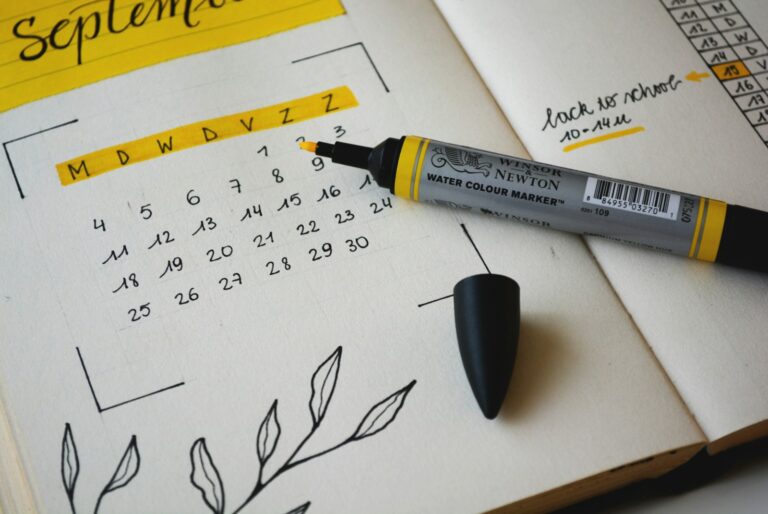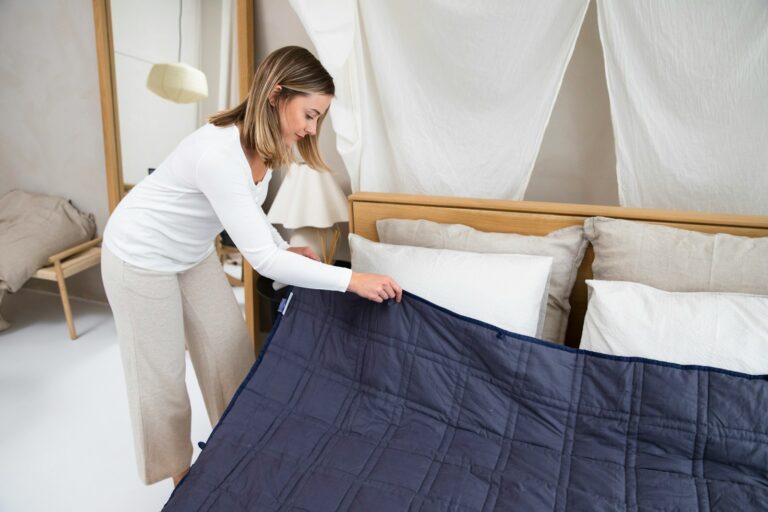Getting kids ready in the morning can feel like a wild scramble against the clock. There’s always something—missing socks, a breakfast protest, or a meltdown over who gets the blue cup. Before you know it, you’re running late and your stress level is through the roof.
Honestly, the secret to faster mornings with kids is prepping the night before and setting up easy systems that cut out a lot of last-minute choices. Little things like laying out clothes, prepping breakfast, and using visual reminders can save you loads of time and make everyone less frazzled.
This works because it turns unpredictable mornings into routines your kids can actually follow on their own. You’ll find tips here for all sorts of families, including some for kids with special needs, so you can build habits that make mornings less of a circus.
Essential Strategies to Speed Up Your Morning Routine with Kids
If you really want to speed things up in the morning, focus on prep, consistency, and simple habits. These three things work together to cut out common slow-downs and start the day off right.
Preparing the Night Before for Smoother Mornings
Doing as much as you can the night before saves a ton of time in the morning. It’s just less to think about when everyone’s groggy.
Clothing and Backpack Setup
Pick out full outfits for each kid, right down to socks and underwear. Put school bags by the door with everything inside—homework, permission slips, library books.
Check the weather and swap out clothes if you need to. Pack lunches and stick them in the fridge so all you have to do is grab and go.
Kitchen Preparation
Set the breakfast table with dishes and utensils. Put out cereal boxes or bread for toast.
Fill water bottles and line them up next to the lunchboxes. Staying organized really helps you keep track of what needs doing.
Personal Items Checklist
Make a checklist for stuff like keys, wallets, and phones. Stick it somewhere you’ll see it on your way out.
Establishing Consistent Wake-Up and Bedtime Schedules
Kids need regular sleep schedules to make mornings bearable. Getting enough sleep is the essential first step for a smoother start.
Age-Appropriate Sleep Times
Elementary kids do best with 9-11 hours of sleep. That usually means a bedtime around 7:30 or 8:30 PM if you’re waking up at 7:00 AM.
Middle schoolers need about 9-10 hours, so push bedtime to 8:00 or 9:00 PM if school starts early.
Creating Buffer Time
Try waking up 15 minutes earlier than you think you need. It’s not always fun, but it gives you a cushion for those surprise delays.
Set a couple alarms if you have to, but try not to keep hitting snooze. That just makes everyone groggy and slows things down.
Weekend Consistency
Don’t let weekend wake-ups drift too far from weekdays—aim to keep it within an hour. Otherwise, Mondays are just brutal.
Incorporating Healthy Habits for Kids
Good morning habits boost energy and help kids focus. They also teach important life skills.
Quick Breakfast Options
Go for protein-rich breakfasts you can make in under 10 minutes—overnight oats, whole grain toast with peanut butter, or Greek yogurt with fruit.
Keep a stash of breakfast bars or bananas for mornings when you’re really running late. Skip the sugary cereals; they just cause crashes later.
Hygiene Routines
Make a bathroom checklist with pictures for little kids. Include brushing teeth, washing faces, and using the toilet.
Movement and Energy
Add a couple minutes of stretching or jumping jacks to get everyone moving. It helps wake up sleepy bodies for school.
Making the routine fun with rewards or games encourages kids to join in.
Creating an Effective and Personalized Morning Routine
Kids are more likely to stick to routines they help plan, and matching tasks to their age keeps things realistic. Visual charts and checklists can keep everyone on track without you having to nag.
Involving Kids in Routine Planning
Kids do better with routines if they help make them. Ask what they think should come first, second, and third each morning.
Let them pick between options like “brush teeth before or after getting dressed.” It gives them a sense of control, but you’re still steering the ship.
Write down their ideas. Show them how their choices fit into the family’s schedule. When kids see their input matters, they’re more likely to stick with it.
Try a family meeting to talk about the new routine. Ask questions like “How long do you need for breakfast?” or “What time should we get up?”
Kids who help create morning routines get more confident and independent. They start learning to manage their own time.
Adjusting Routines for Age and Development
Younger kids need simple, short routines. A 4-year-old might just need to get dressed, eat, and brush their teeth.
Older kids can handle more steps. An 8-year-old might pack their backpack, make their bed, and help with lunch.
Ages 3-5: Stick to 3-4 easy steps. Use pictures. Give them extra time.
Ages 6-8: Add a couple more steps. Start teaching time management.
Ages 9-12: Build in more responsibility—like getting school stuff together or helping with chores.
Match what you expect to what your kid can actually handle. A successful morning routine is one that fits your child.
Visual Schedules and Checklists
Visual reminders help kids remember what to do without you having to repeat yourself. Make a chart showing each morning step.
Use photos or drawings for kids who can’t read yet.
Morning Routine Checklist Items:
- Wake up and get out of bed
- Use the bathroom
- Brush teeth
- Get dressed
- Eat breakfast
- Pack backpack
- Put on shoes
Hang the chart somewhere obvious, like the bathroom mirror or bedroom door.
Let kids check off or move items as they finish each one. Turning it into a game makes it less of a chore.
A morning routine checklist keeps kids organized and helps them build good habits. Update the chart as they grow.
Supporting Neurodivergent Needs in the Morning
Neurodivergent kids can have extra challenges with mornings, so they might need different strategies. It’s all about figuring out what works for your child, whether they have ADHD, sensory sensitivities, or trouble with planning.
Tailoring Routines for ADHD
Kids with ADHD need structured routines that cut down decisions. Their brains just work differently, and transitions can be tough.
Time Management Strategies:
- Use timers for each task (like 5 minutes for teeth, 10 for getting dressed)
- Try colored clocks or countdown timers for visual cues
- Add buffer time between steps
Reducing Morning Chaos:
Keep all morning supplies in one spot to make things easier. Less hunting means less stress.
Prep the night before—clothes, backpacks, breakfast. Fewer decisions in the morning helps a lot.
Sensory Supports and Accommodations
Sensory overload can really throw off mornings. Some kids struggle with lights, sounds, or scratchy clothes.
Creating Sensory-Friendly Mornings:
- Start with dim lights, then brighten gradually
- Play soft background music instead of harsh alarms
- Let kids pick clothes with comfy textures
- Make sure the bathroom isn’t too cold
Common Sensory Challenges:
| Challenge | Solution |
|---|---|
| Bright bathroom lights | Use dimmers or nightlights |
| Scratchy tags | Buy tagless or cut out tags |
| Cold floors | Add soft mats or slippers |
| Loud hair dryer | Try quieter models or towel-dry hair |
Some kids need movement to feel right. Add a few jumping jacks, stretches, or a quick dance to your routine.
Breaking Down Tasks into Manageable Steps
Executive functioning issues can make “get ready for school” feel overwhelming. Breaking things down helps.
Task Breakdown Examples:
Instead of “get ready,” say:
- Put on underwear and socks
- Put on shirt
- Put on pants
- Brush teeth for 2 minutes
- Wash face with a washcloth
Visual Support Tools:
Picture planners can help. Use photos of your kid doing each step, or simple drawings.
Checklists with boxes to tick off give a sense of accomplishment. Keep them at eye level and use big, clear fonts.
Communication Strategies:
Keep your voice calm. Yelling or sounding stressed can make things worse.
Give one instruction at a time. Wait until your child finishes before giving the next step.
Building Independence and Positive Habits
Teaching kids to handle their own morning tasks helps them feel capable and keeps things moving. The trick is giving them jobs they can actually do, and not expecting perfection.
Fostering Accountability and Responsibility
Start with tasks kids can handle solo. Five-year-olds can get dressed and brush their teeth. Eight-year-olds can pack their own bag and make simple breakfast choices.
Make a morning routine checklist with clear steps. Visuals beat constant reminders almost every time.
Age-Based Morning Responsibilities:
| Age Group | Independent Tasks |
|---|---|
| 3-5 years | Get dressed, brush teeth, put on shoes |
| 6-8 years | Pack backpack, make bed, simple breakfast prep |
| 9-12 years | Complete hygiene routine, organize school materials, help with breakfast |
Let kids manage their own timeline. Set a finish goal and let them figure out how to get there. It’s a good way to build problem-solving skills.
Teaching healthy lifelong habits starts with little things—making beds, washing hands. These small wins add up.
If your kid gets stuck, guide them to a solution instead of jumping in to fix it. It’s not always easy, but it helps them learn to handle bumps on their own.
Celebrating Progress and Staying Flexible
Notice when your child improves in something specific. Instead of a generic “Good job this morning,” try saying, “You remembered to pack your lunch without a reminder.” It feels more genuine, right?
Keep progress tracking simple. Younger kids usually love sticker charts. For older ones, small rewards or earning special privileges seem to work better.
Weekly Progress Tracking:
- Monday: Jot down which tasks needed reminders
- Wednesday: See if they’re needing fewer reminders
- Friday: Celebrate what got done without help
Start small and build routines gradually so things actually stick. Adding just one new responsibility every couple of weeks is usually enough.
Sometimes, routines just fall apart. Maybe someone’s sick, schedules get weird, or there’s extra stress at home. It’s okay to be flexible for a bit.
Try to focus on progress, not getting everything perfect. Some mornings are easy, others are a mess. That’s life, honestly. Kids learn that sticking with routines is more important than doing them perfectly.
Give kids some choices inside the routine. They could pick between two breakfast options or decide if they want to brush their teeth before or after getting dressed. Little bits of control go a long way.




